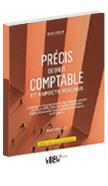BULGARIAN ACCOUNTING: ASSET ASSESSMENT
Bulgarian accounting standards stipulate that assets must be listed to their acquisition value (historical cost) reduced if necessary, by depreciations, impairments and provisions.
A - Items that may be included in the assets
The sustainability criterion will determine whether an item is to be included in the company's expenses or in its assets. But the value of the property is also important. It is thus customary in Bulgarian accounting to directly account for assets worth less than 700 leva (EUR 350) and, on the contrary, to register assets worth above this threshold as a capital asset.
B - Property financed through leasing
Assets financed through financial leasing are listed as fixed assets, while leasing debt is booked as debt.
C - Assessment at historical cost
This is the rule that prevails in Bulgaria for any company establishing its financial accounts according to Bulgarian accounting standards.
It is up to each company to choose and implement the depreciation policy that best suits to its situation. However, as of the tax side, depreciation remains limited as follows:
- Building: 4%
- Vehicles: 25%
- Computers: 50%
(A full inventory of maximum rates is available at the end as a result of this article).
It should be noted that neither land nor goodwill are depreciable.
D - Fair Value Valuation
Bulgarian companies that establish and submit their accounts in accordance with Bulgarian Accounting Standards no longer have the right to register their assets at fair value (except in the case of the registration of an asset exchanged instead of acquired).
Art. 55 of the Corporate Taxation Act
Asset Classes
(1) For the purposes of determining the tax amortization annuity, depreciable assets are divided into the following categories:
1 Category I - massive buildings, including investment real estate, equipment, communication and electricity devices;
2 Category II - machinery and equipment;
3 Category III - vehicles other than motor vehicles; pavement of roads and tracks;
4 Category IV - computers, devices, software, mobile phones;
5 Category V - cars;
6 Category VI - tangible and intangible assets with a specified utility term under a contract or legal obligation;
7. Category VII - all other capital assets.
(2) Annual amortization rates are set once a year and may not exceed the following limits:
| Asset Categories | Annual Capital Impairment (%) |
| Category | I 4 |
| Category | II 30 |
| Category | III 10 |
| Category | IV 50 |
| Category | V 25 |
| Category | VI 33 |
| Category | VII 15 |





.jpg)

